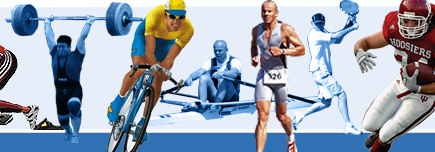WRIST INJURIES
De Quervain's Syndrome: Inflammation of the tendons of the thumb. Pain is pronounced with general thumb use and gripping activities. Conservative management consists of ice, anti-inflammatories, but in some cases, immobilization may be required. As acute pain decreases, physical therapy may be introduced to establish normal strength and range of motion.
Fractures to Hand or Wrist: Common mechanism of injury is falling on an outstretched arm with wrist hyper-extended. As with elbow fractures, because of important vessels and nerves surrounding these structures, it is very important to follow-up with an orthopedic surgeon or a hand specialist.
Tendon/Ligament Injuries to Fingers: Usually occur with direct contact to the fingers ("jammed finger") or forceful gripping of an object that is moving. Pain may occur with movement, or in some cases, movement may not occur at all if a tendon is ruptured. Proper medical attention is necessary to avoid permanent deformity to the finger involved. Immobilization is usually done as required by the physician to allow proper healing of the damaged tissues. Once the splint is removed, physical therapy will help restore proper motion to the fingers to facilitate return to full function.
Carpal Tunnel Syndrome: Caused by repetitive wrist flexion (i.e. typing, for example), that produces increased swelling and pain to the wrist and hand. Numbness may also occur to the thumb and first two fingers compromising muscle function to the hand. Carpal Tunnel may be managed through immobilizing the wrist to reduce stress on the muscles accompanied with anti-inflammatories to decrease swelling. Cold laser therapy has been proven to reduce inflammation and promote healing. Once pain and swelling are diminished, physical therapy can help strengthen proper muscles. Our professional staff will also visit your work site to adjust the workstation to fully optimize good technique to avoid future injury or recurrence
|















